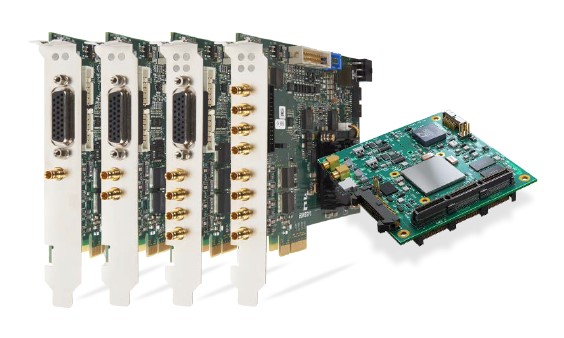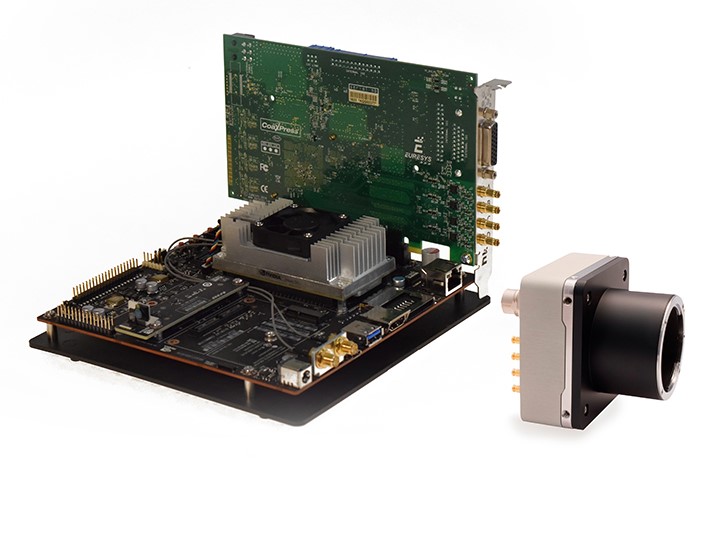The Rise of ARM Platform
Product /
09.2017
INDUSTRIAL MACHINE VISION APPLICATIONS TRANSITIONING TO EMBEDDED ARM COMPUTING PLATFORMS
Pellenc, a leading producer of agricultural machinery, is using on its grape harvester Quadcore ARM processors for Machine Vision applications.
 Over the past decade, the ARM embedded computing platform has come to dominate smartphones and other applications where the primary emphasis is on low cost, power consumption, size and weight.
Over the past decade, the ARM embedded computing platform has come to dominate smartphones and other applications where the primary emphasis is on low cost, power consumption, size and weight.
Over the same period, personal computing platforms based on Intel architectures have maintained a substantial lead in processing power, ensuring their continued dominance of most industrial computing applications. But over the last few years the architectures of ARM processors have been substantially upgraded by adding cores, instructions and faster pipelines, increasing their performance threshold to the point that they have begun to compete head-to-head with Intel and AMD PC processors in industry benchmarks. Embedded continues to stand for low cost and low power consumption but it does not mean low processing power anymore.
The developers of applications such as machine vision that require high levels of computing power are now able for the first time to take a serious look at the ARM embedded platform and in many cases they like what they see. For example, unmanned aerial vehicles (UAVs) is one application where developers are taking a close look at ARM processors due to their reduced power consumption, size and weight. Intelligent transportation systems (ITS) is another application where ARM processors offer obvious potential advantages. High speed tolling and red light and speed enforcement systems are frequently detached from the power grid so the reduced power consumption of ARM processors is attractive. ARM processors also offer potential benefits for the proliferating vision systems on current-generation automobiles because their reduced weight and power consumption generate fuel economy savings. Of course, the lower cost of the ARM platform is also attractive to automobile original equipment manufacturers (OEMs).
Machine vision integrators considering a move to the ARM platform can select from a wide selection of embedded ARM processors incorporated into Systems on a Chip (SOCs) that are good fit for vision applications. Examples include the NVIDIA Jetson TX2 Module, Gigabyte MP30-AR1, NVIDIA Jetson TK1 developer kit and NXP®/Freescale i.MX 6 Computer on Module – Apalis iMX6. Typical ARM SoCs include an ARM central processor unit (CPU), graphics processor unit (GPU), random access memory (RAM) and interfacing technologies such as Wi-Fi, USB and Bluetooth. There are a number of ARM-based vision libraries including OpenCV, OpenMV, SimpleCV, OpenCL and others. A common approach to utilizing embedded vision applications incorporates an ARM-enabled SoC along with memory and storage in a Computer on Module (CoM) built to the Peripheral Component Interconnect Express (PCIe) high-speed serial computer expansion bus standard and built to the PC/104 form factor. This approach enables the CoM and a PCIe PC/104 frame grabber to be stacked on top of one another to deliver industrial-strength machine vision processing power in a compact and rugged package.
Euresys Coaxlink frame grabbers
Frame grabber developers such as Euresys now offer support for ARM architectures. For example, Euresys’ latest series of frame grabbers, the Coaxlink series, supports the AArch64 64-bit ARM architecture for Linux. The Coaxlink cards are CoaXPress frame grabbers that use standard coaxial cables which are preferred in many industrial applications because of their wide use and robustness to electromagnetic interference (EMI). For example, coaxial cables are standard in in-vehicle applications such as automotive, rail and aircraft. CoaXPress uses a single coaxial cable to transmit images at up to 625 MB/s while simultaneously transmitting control data and triggers and providing up to 13W of power to the camera. Euresys also provide unofficial/beta support for our Grablink frame grabbers that support the Camera Link interface.
ARM-based agricultural machinery
One of the pioneers in the move to embedded vision is Pellenc Group, a leading producer of agricultural machinery including vine growing, harvesting, winery and fruit growing equipment. One of the company’s products uses machine vision to sort grapes to remove unwanted elements such as green waste, foreign bodies or under-ripe berries. The company is in the process of converting this application along with other computing systems such as those used to control its machines from the PC to the ARM platforms. Pellenc is using ARM processors on its grape harvester and other products and is evaluating quadcore ARM processors with a e2v color line-scan cameras and Euresys Grablink frame grabbers on its grape sorter.
“We are achieving a cost reduction of 50% in computing hardware across our product line which will enable us to deliver additional features and functionality to our customers,” said Cyril Berger, Research and Development Manager for Pellenc. “Standardizing on ARM-based computers throughout our product line will also reduce software development costs.”
ViTec Co. Ltd. in St. Petersburg, Russia is another machine vision systems integrator that is leading the way in developing embedded vision applications. For example, the company is now working on a wearable machine vision system that differs from popular consumer oriented action cameras in that it uses a much more powerful and higher resolution camera, the Basler beat 12 Megapixel high speed camera. The camera connects to a Euresys Grablink PCIe frame grabber that is stacked on an embedded computer based on a Nvidia Tegra X1 mobile processor with 256 GPU cores and multi-core 64-bit CPUs.
“The low power consumption, small size and low weight offered by the ARM platform were all critical in this wearable application”, said Maxim Sorova, CEO of ViTec Co. Ltd. “The support provided by Euresys for its Linux-based driver on the ARM architecture for Linux was very helpful in enabling us to meet our customer’s timelines and performance benchmarks.”
Conclusion
 A wide range of Embedded ARM processors are available, such as, for example, image processing integrators, the Nvidia Jetson TK1 module. While the PC platform is still by far the leader in top level intensive computation image processing, embedded ARM vision systems have increased processing power to levels approaching and in some cases exceeding the PC platform while maintaining their advantages in power consumption, size, weight and system costs. Developers of vision peripherals are moving quickly to support embedded ARM vision development by providing drivers and technical support that enable their products to support ARM architectures. Euresys will continue to invest in embedded ARM computing because it enables our customers to realize significant savings in current applications while at the same time making it feasible for machine vision to penetrate a wide range of new applications.
A wide range of Embedded ARM processors are available, such as, for example, image processing integrators, the Nvidia Jetson TK1 module. While the PC platform is still by far the leader in top level intensive computation image processing, embedded ARM vision systems have increased processing power to levels approaching and in some cases exceeding the PC platform while maintaining their advantages in power consumption, size, weight and system costs. Developers of vision peripherals are moving quickly to support embedded ARM vision development by providing drivers and technical support that enable their products to support ARM architectures. Euresys will continue to invest in embedded ARM computing because it enables our customers to realize significant savings in current applications while at the same time making it feasible for machine vision to penetrate a wide range of new applications.
Euresys ARM Article – September 2017